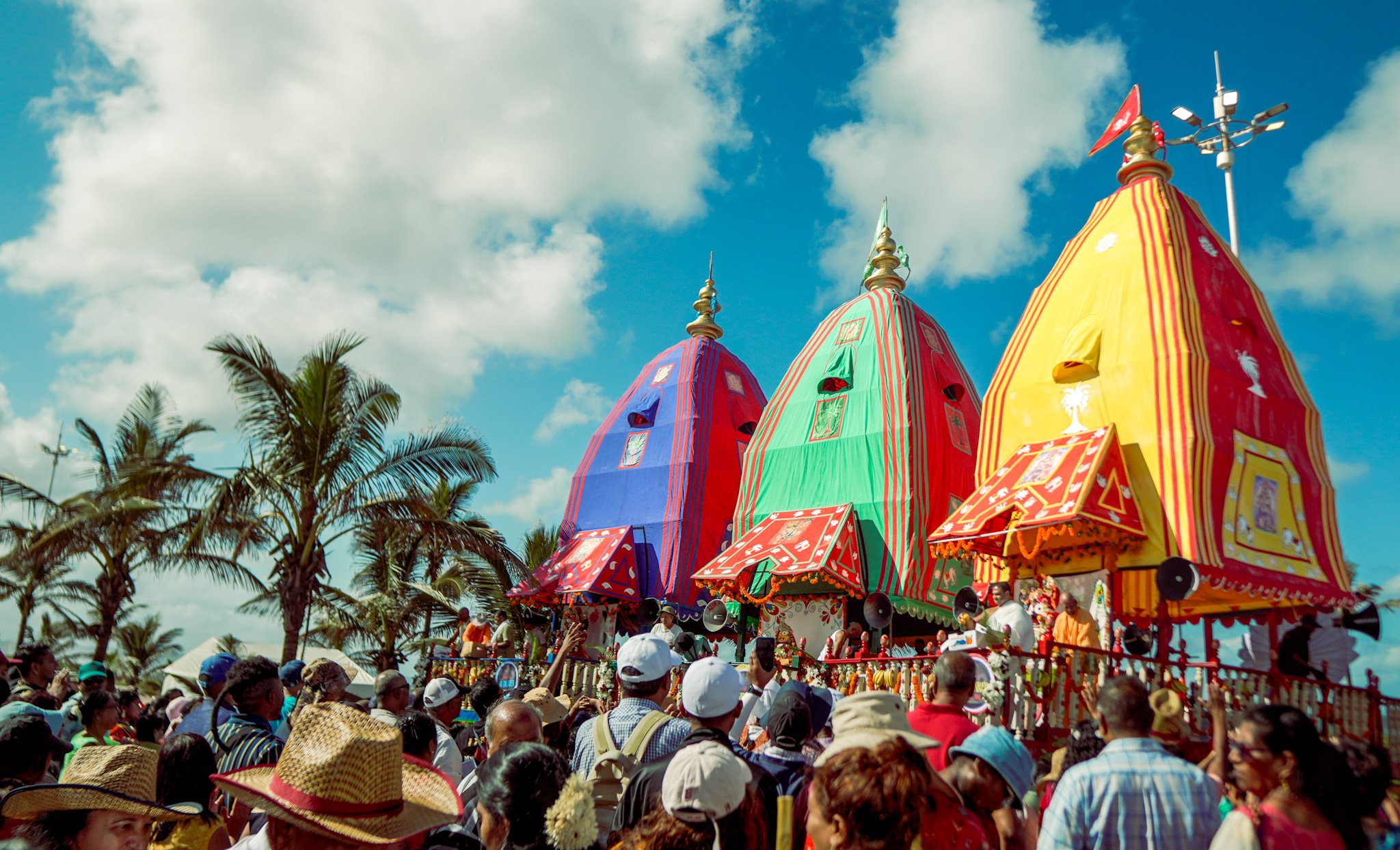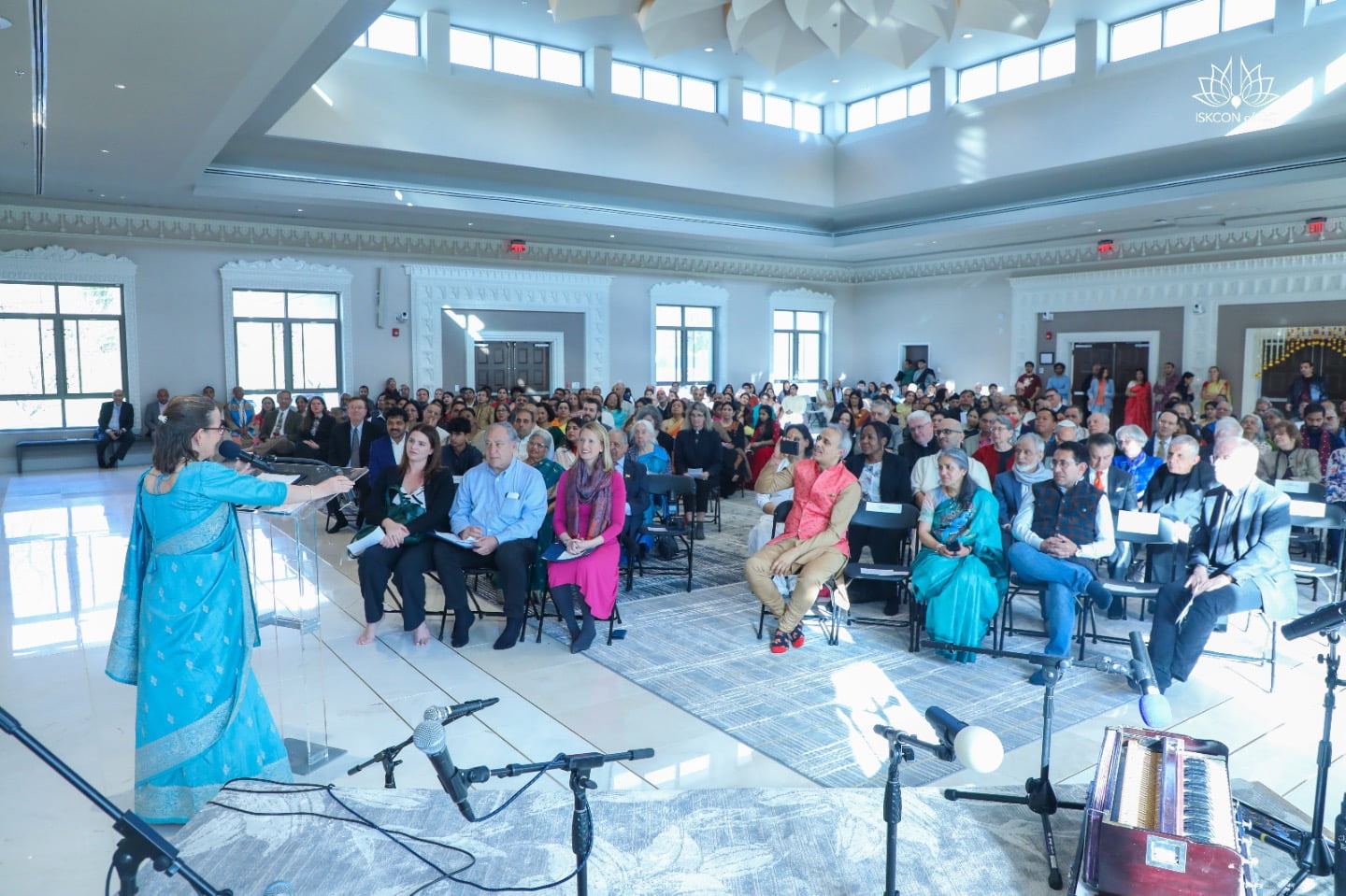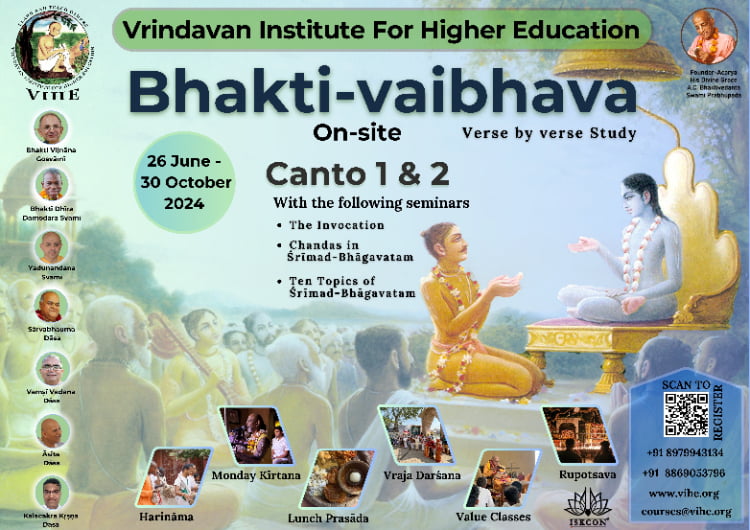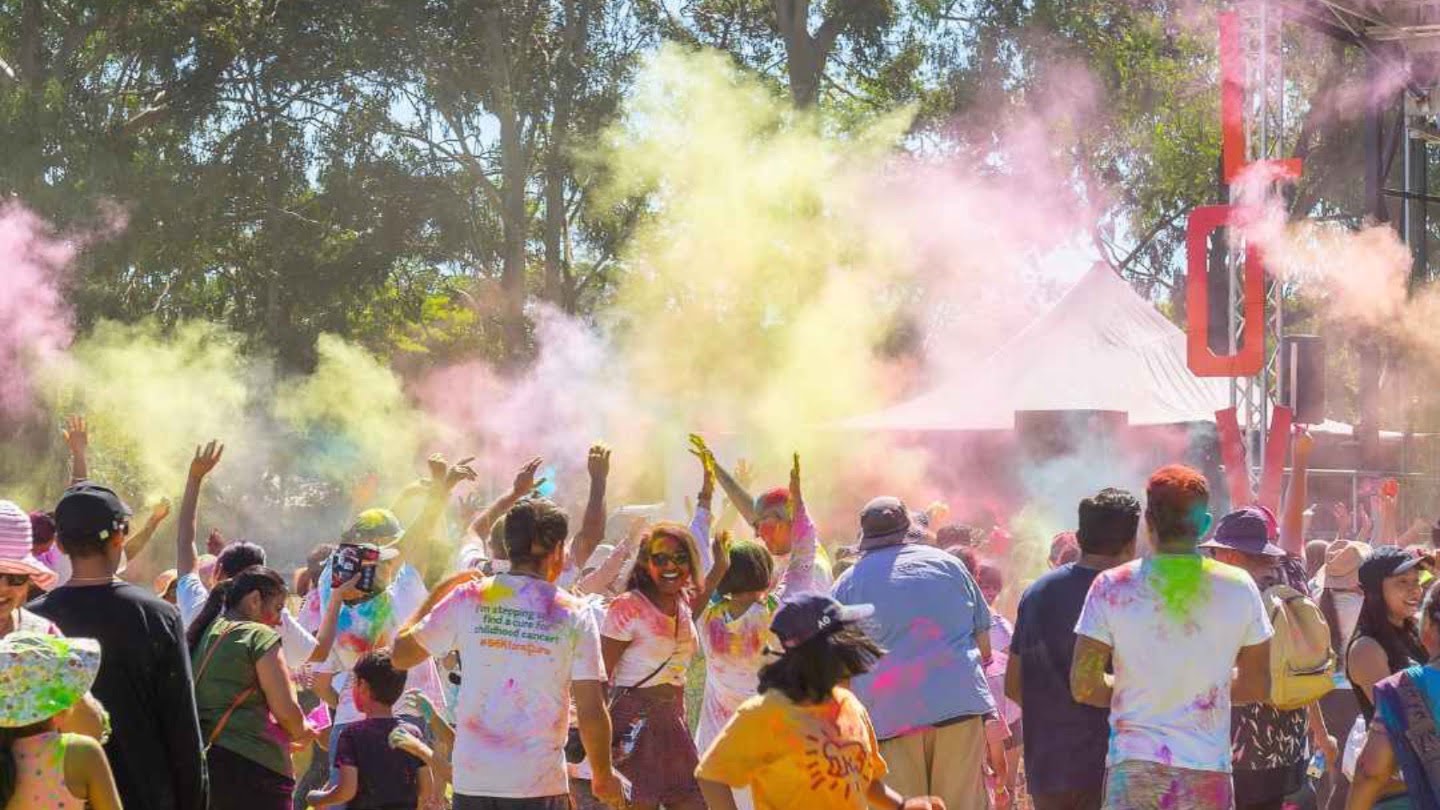TOVP Film Documents the Rise of ISKCON’s Biggest Temple
By Madhava Smullen | Sep 21, 2012

Photos by Andras Konyves.
As construction on the Temple of the Vedic Planetarium—ISKCON’s flagship temple in Mayapur, West Bengal—continues, a new documentary has been released online at TOVP.org and on Youtube chronicling the temple’s rise.
The half-hour film, “The Cosmos out of the Rice Fields,” takes viewers through the history of the sixty-million-dollar project from its very beginnings.
We see the temple’s prediction by past Vaishnava saints, ISKCON Founder Srila Prabhupada’s vision for it, and his early disciples starting work on the project in the 1970s.
The film describes devotees’ struggles to realize their spiritual master’s vision over four decades, going through different designs and facing pushback from the local government, until its successful inauguration in 2010 under chairman Ambarish Das (Alfred Ford).
We’re shown around the construction site, where 240 feet of the central superstructure has been completed. The final height of the temple with its central dome will be 330 feet, and the huge kirtan hall will hold 10,000 devotees.
Much of the superstructure of the left wing, where the titular planetarium theater will be installed, has also been completed. Construction is yet to begin on the right wing, where an awe-inspiring black marble temple for Lord Nrsimhadeva will be erected.
Interviews with Ambarish, early Mayapur director Jayapataka Swami, ISKCON Governing Body Comission members Anuttama Das and Pragosh Das, Managing Director Sadbhuja Das and Project Manager Pundarikaksha Govinda Das give detailed insight into the construction process and final vision.

Ambarish Das talks about the big laugh he shared with Srila Prabhupada when the ISKCON founder asked him to finance the Temple of the Vedic Planetarium in 1976
We get a special look at the plan for the planetarium theater, which will seat 275 people at a time and be housed in a 23-meter tilted dome.
Resident cosmologist Antardwip Das and exhibits coordinator Hari Sauri Das also explain how they’ll create three levels of exhibits and a two-hundred-feet-across rotating model of the universe, all depicting the cosmos according to the ancient Puranic text Srimad-Bhagavatam.
“Srila Prabhupada wanted this to be an educational facility, where Westerners in particular could come and experience the Vedic view of the cosmos and discover their place in the world, their identity as a spirit soul, and their relationship with God,” says Ambarish.
Ambarish hired “The Cosmos Out of the Rice Fields” director Krishna-lila Dasi (Krisztina Danka) to make the documentary after seeing the quality and extent of her work.

TOVP Managing Director Sadbhuja Das explains to Krishna-lila and her camera crew what the entrance of the Temple will look like.
Heading up her own company Karuna Productions, Krishna-lila has written and produced twenty-five documentaries, many of which have appeared on national television in her native Hungary.
She says the film took several months to make, in three stages. During the first stage, pre-production, she had to research the topic, create a shooting script, and hire her crew.
The next stage, the actual filming, was the shortest. Krishna-lila and her crew shot over a ten-day period in February 2012, on location at the construction site in Mayapur as well as with Hari Sauri at the Bhaktivedanta Research Center in Kolkata, which has a vast 16,000 volume library of ancient spiritual and cosmological texts.

TOVP Scientific Exhibits Coordinator Hari-sauri Das shows Krishna-lila rare manuscripts at the Bhaktivedanta Research Center in Kolkata
On the construction site, things were busy as the film crew stepped amongst 800 workers, on shifts to keep construction going 24 hours a day. There are also around fifty engineers, artists, architects and specialists working on the project, including many ISKCON devotees from all over the world.
“The whole shooting experience was a very pleasant one,” says Krishna-lila. “Myself and the crew had known each other for years and worked on many other projects together, so everything went smoothly. Besides that, the TOVP team could not have been more helpful and supportive—Sadbhuja Prabhu in particular was like a caring older brother to us all.”
Under these excellent conditions, Krishna-lila and her crew shot over ten hours of interviews and footage in broadcast quality full high definition.

TOVP Project Coordinator Pundarikaksha Govinda Das discusses the TOVP’s construction schedule.
The final stage of making the film, post-production, took six months. Krishna-lila and her editors had to find exciting visuals to bring their interviews to life, particularly the heady philosophical and scientific discussions about the Planetarium exhibitions.
Meanwhile, to give the right historical perspective, they had to find archival footage, photos and audio of Srila Prabhupada and the early days in Mayapur.
“We are very greatful to the Bhaktivedanta Archives, the BBT, and Yadubara Das of ISKCON Cinema for these materials,” says Krishna-lila, who updated the old footage to the present HD standard the rest of the film was shot in using a special technique.

A camera-man films workers at the construction site
Now that “The Cosmos Out of the Rice Fields” is available for viewing, there’s still more work to be done. The film is just the first in a three-part series that will document the entire construction of the Temple of the Vedic Planetarium.
Krishna-lila plans to return to Mayapur every year until the TOVP’s opening to record the progress, as well as to cover different aspects of the project.
Her second film will focus on the detailed design and art work that goes into the project, as well as the social importance of Mayapur within the local and worldwide ISKCON community. The third is expected to show the temple’s opening and discuss its legacy.
In the future, the films are expected to be brought together in a DVD package that will chronicle the story of ISKCON’s biggest project for future generations of devotees to come. They may even be submitted as television documentaries.

Anuttama Das and Pragosh Das sharing a joke before getting interviewed for the film
“For now, though, the films will be used for fundraising, and to generate people’s interest in the project,” says Ambarish. “So far, so as not to endanger negotiations on the project, we haven’t taken a very public profile, but now it’s time.”
As per Srila Prabhupada’s wishes, fundraising is currently being carried out in Indian cities such as Mumbai, Kolkata and New Delhi. ISKCON leader Radhanath Swami and publisher the Bhaktivedanta Book trust have joined lead donor Ambarish—great grandson of automobile magnate Henry Ford—with their own contributions. But with more than $30 million still left to raise to complete the project, a lot more help is needed.
“We’re ahead of schedule, but under budget,” says Ambarish.
Since “The Cosmos out of the Rice Fields” was shot in February 2012, construction on the central dome has begun—an exciting development that when completed will be a major accomplishment.
But without funds, Ambarish says the project may slow down. Already, it looks like the planned completion of the superstructure and installation of the Deities in 2016, during ISKCON’s 50th anniversary, may be delayed. And to ready the project for a public opening will take even longer.

Filming the rice fields surrounding Mayapur from which “the cosmos” will emerge
Ambarish, however, is still hopeful. “We’re praying every day,” he says. “Mayapur is ISKCON’s world headquarters, a home for all the devotees. So if they could just join us in prayer and send us their well-wishes, we’d be very pleased.”
The hope is that the new documentary film will bring the project closer to devotees’ hearts.
“I pray that the viewers will like what they see, and will grow to appreciate Srila Prabhupada, his magnificent vision and his hard-working devotees even more,” says Krishna-lila.
But Ambarish, one of these hard-working devotees, doesn’t take much credit for the forty-year-long mission to make the TOVP a reality.
“I’ve really got no qualifications for doing this,” he says. “But somehow or other, Srila Prabhupada tapped me to do this service for him. And it’s been very humbling to see it actually happen. I am just grateful to be able to participate.”
To watch the movie please visit www.tovp.org or click here:











